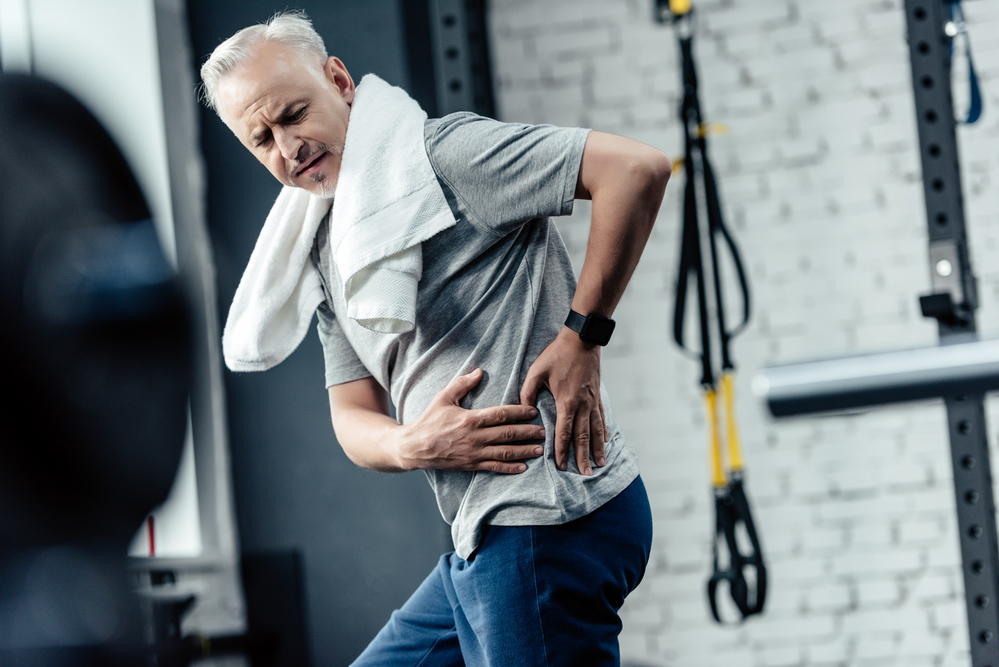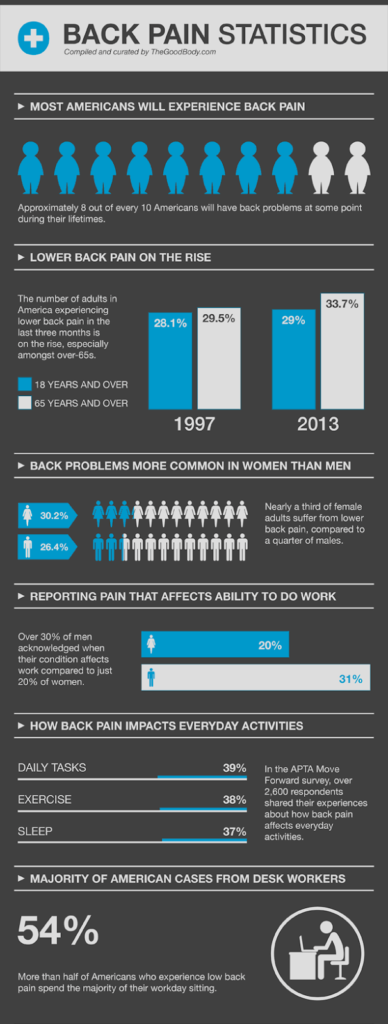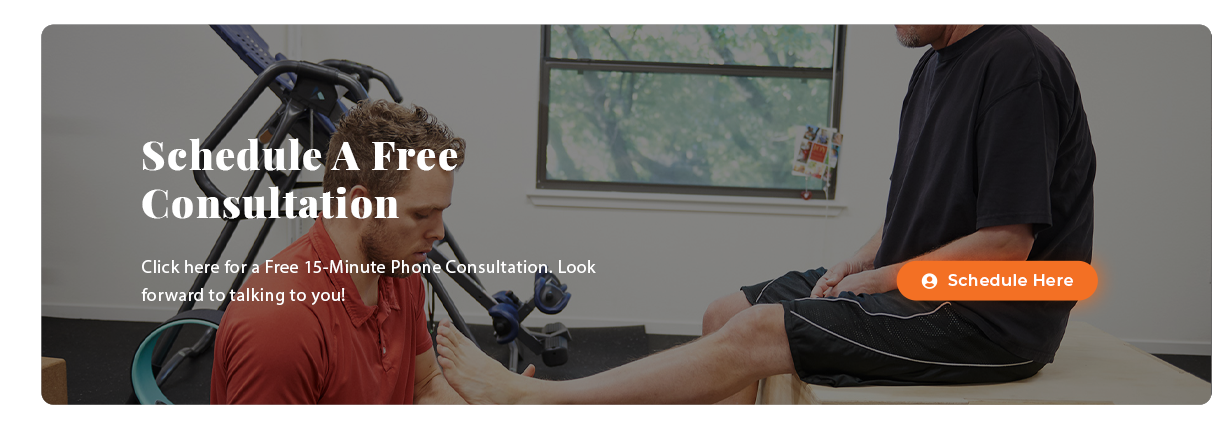“I have a confidence about my life that comes from standing tall on my own two feet.” – Jane Fonda
Lower back pain is highly prevalent in the U.S. and even worldwide. It seems that everyone suffers from back pain at some time, but lower back pain is most common.
Most people tend to either “live with the pain” and self-medicate using over-the-counter drugs like analgesics or NSAIDs or, if the pain is too much, go to the doctor. But there are options for initial treatment.
Lower Back Pain Treatment Strategies
Recently, a new study was released that has offered supporting evidence for the effectiveness of physical therapy as a treatment for lower back pain. In addition, the study showed that choosing physical therapy as an initial treatment option for low back pain could save money and dramatically reduce the possibility of an opioid prescription.
An article in the American Physical Therapy Association website noted that the study, published in Health Services Research tracked private insurance information from nearly 150,000 patients for one year after an initial visit for lower back pain. The researchers tracked patients who saw a physical therapist, or PT, first, those who saw a PT later after an initial visit with another provider, and those who never visited a PT during the study period.
“The conclusion: patients with LBP who received care from a PT first experienced lower out-of-pocket, pharmacy, and outpatient costs after 1 year and reduced their likelihood of receiving an opioid prescription by 87% compared with patients who never visited a PT. The PT-first group also was associated with a 28% lower probability of having imaging services and 15% lower odds of making a visit to an emergency department.”
This is significant since more traditional treatments through physicians often include prescriptions for opioid medications and, in some cases, surgery.
There are several statistics regarding lower back pain that point to not only its prevalence but the impact on sufferers. This excerpt from an infographic (click the image to view it in its full size) from TheGoodBody.com illustrates some of these facts:
One of the perhaps not-so-surprising statistics is that over half of Americans who suffer from lower back pain have jobs that require them to spend most of their workdays sitting at a desk. We know now that sitting for extended periods of time can be significantly destructive on an individual’s health and well-being.
There are many instances where simply taking some ibuprofen or aspirin no longer bring enough relief from the pain. This is especially true for people suffering from long-term and chronic lower back pain. Regardless of the root cause, over-the-counter medications are often not enough to try to treat the pain.
But the danger is that people will often succeed in getting a prescription from their doctors for the ongoing pain in their lower backs. And these drugs are, more often than not, opioids that can easily lead to an unexpected addiction.
The numbers are both stunning and tragic for opioid disorders.
- From 1999 to 2017, more than 700,000 people have died from a drug overdose.
- Around 68% of the more than 70,200 drug overdose deaths in 2017 involved an opioid.
- In 2017, the number of overdose deaths involving opioids (including prescription opioids and illegal opioids like heroin and illicitly manufactured fentanyl) was 6 times higher than in 1999.
- On average, 130 Americans die every day from an opioid overdose.
And, if a doctor opts to forego medications and recommends surgery, there is still a ten to thirty percent chance of not becoming pain-free.
“After a spine fusion surgery, it takes 3 to 12 months to return to most normal daily activities, and the success rate in terms of pain relief is probably between 70% and 90%, depending on the condition the spine surgery is treating.”
[from spine-health.com]
Other Chronic Lower Back Pain Treatments
Many times we can successfully diagnose your lower back pain by using the Anatomy in Motion, or AiM, assessment. This technique can assess your walking motion, or gait, which can directly impact the condition of your back.
The power of the AiM assessment is that it can connect your entire body’s movement and track any minor movement compensations. Because any back pain is usually just a symptom of an actual cause or dysfunction, the AiM assessment can help us create a type of “map” for discovering the origin of your pain.
After we have completed an assessment and determined the underlying cause of your pain, there a few different manual therapies such as Active Release Technique®, or ART®, that we can implement to relieve your pain.
Active Release Technique® is a clinical manual therapy, originally developed by Dr. P. Michael Leahy, and is specifically designed to treat and relieve musculoskeletal pain and dysfunction. This is done through manually manipulating muscles, tendons, ligaments, joint tissue and nerves.
Active Release Technique® was specifically designed to locate and treat scar-tissue adhesions in the muscles and surrounding soft tissues. Because of this it’s highly effective for many types of back pain. By locating these soft-tissue adhesions, ART® allows us to break up restrictive scar-tissue and restore tissue flexibility and movement.
As a movement-based therapy it uses patented hands-on treatments along with client movement to break up scar tissue, separate adhesions in muscles, relieve entrapped nerves and restore muscle length. ART® is a comprehensive system and designed to identify and treat problems in specific body structures and tissues.
ART® can also increase range of motion in your back, improve blood flow through the tissues, and help reduce or even eliminate chronic and acute pain.
In addition to manual therapies and depending on the actual root cause, we can also incorporate specialized exercises, physical therapy, chiropractic care, rest, ice and heat to relieve the pain.
Unlocking Effective Strategies for Lower Back Pain Relief
The Hidden Causes of Lower Back Pain
Surprisingly, lower back pain often stems from problems outside the back itself. Issues like poor posture, muscle imbalances, or even walking patterns can contribute. Using advanced methods like Anatomy in Motion (AiM), specialists can assess your gait to uncover hidden misalignments. Think of this as uncovering the domino effect behind your discomfort—once the first piece is set right, the others follow suit.
Why Physical Therapy is a Game-Changer
Research backs up the effectiveness of physical therapy for lower back pain. A study published in Health Services Research found that patients who chose physical therapy first reduced their odds of needing opioids by 87% and cut their out-of-pocket costs significantly. Why settle for temporary relief from painkillers when physical therapy can tackle the problem at its root?
Active Release Technique® (ART®): A Hands-On Solution
For many chronic pain sufferers, Active Release Technique® (ART®) offers targeted relief. This hands-on therapy identifies and treats scar tissue adhesions in muscles and soft tissues, improving flexibility, increasing blood flow, and restoring mobility. Think of it as decluttering your body’s “storage spaces” to free up movement and eliminate discomfort.
Enhancing Recovery with Complementary Treatments
Beyond manual therapies, simple yet effective treatments like alternating ice and heat, chiropractic adjustments, and tailored exercises can accelerate your recovery. By combining these methods, you can create a holistic approach to healing that addresses the root causes and symptoms simultaneously.
The Future of Pain Management
You don’t have to rely on painkillers or invasive surgeries to regain your life. By focusing on movement-based solutions, personalized assessments, and innovative therapies, the road to recovery becomes clearer. Ready to start your journey? Don’t wait—let’s tackle your pain together!
Pain and Performance Solutions for Chronic Lower Back Pain
When your initially come to Pain and Performance Solutions, we make it a point to first learn everything we can about your current pain along with any history of discomfort. Actually treating and relieving your lower back pain only starts once we understand where and how your pain started.
Your trust in us and your honesty are key to our success. Ultimately, the only way to achieve total recovery is by getting your body healthy and working properly.
We do this by first conducting a full examination to help us determine which form of treatment is best suited to put you on your road to recovery. Because your body can compensate for pain to allow you to function during your day, the pain can move or lead to other forms of pain.
Don’t hesitate to reach out. We are here to help and will answer any questions that you may have. You can reach us at (707) 636-4404 or by filling out our online contact form



